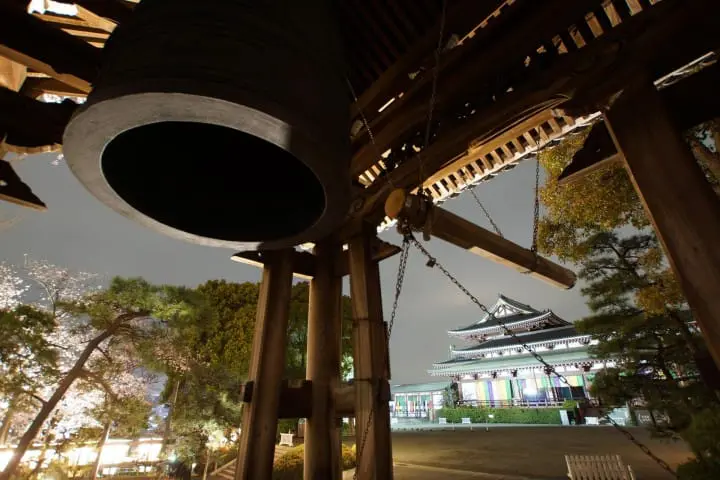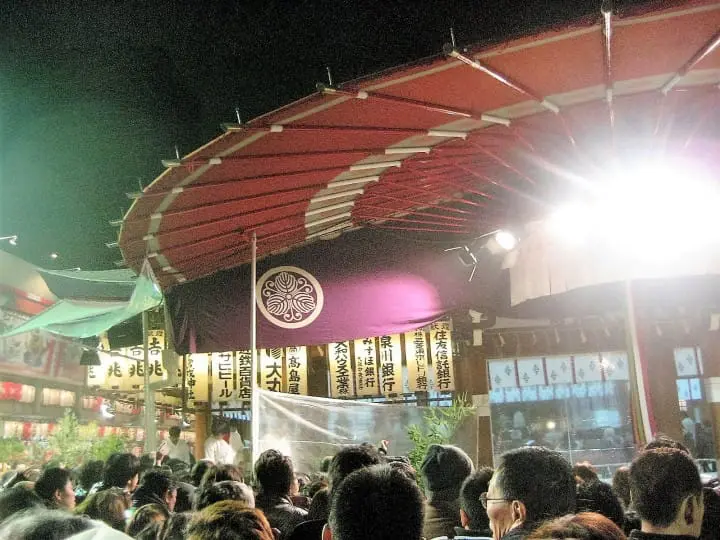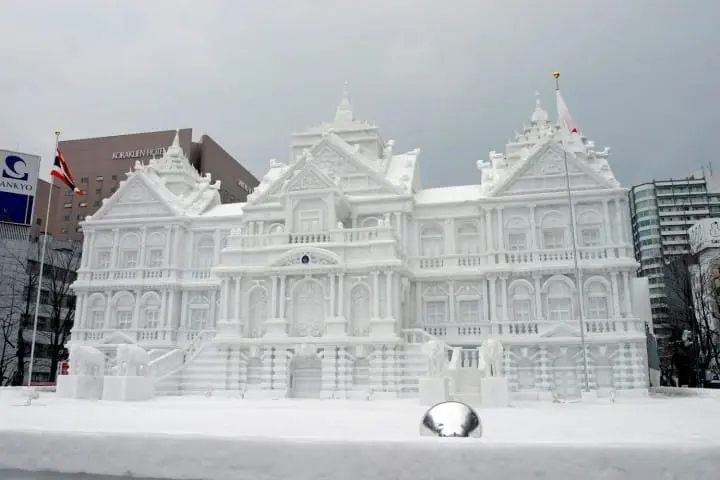Japan's Essential Winter Events: December-February 2025-2026

From New Year customs and shrine visits to the Sapporo Snow Festival, there are many winter festivals in Japan between December and February. Discover some of the most iconic winter events in Japan.
Winter Events in Japan: Festivals and Celebrations

Japan’s winter runs from December through February. Because the country is long and narrow, winter climates vary: southern islands are relatively mild, while northern regions often get heavy snowfall.
Still, there are many festivals and events unique to Japan’s winter season. Read on to discover the celebrations held between December and February.
Essential Winter Events in Japan
1. December Festivals and Events
- Omisoka: New Year’s Eve
- Namahage: A Tradition of Northen Japan
2. Festivals and Events in January
- Oshogatsu: The First Day of the New Year
- Visit the Seven Deities of Good Fortune
- Tooka Ebisu
3. Festivals and Events in February
- Setsubun
- Sapporo Snow Festival
December Festivals and Events
1. Omisoka: New Year’s Eve
In Japan, New Year’s Eve is called Omisoka. The word misoka means the last day of a month, and December 31 is specially referred to as Omisoka because it marks the end of the year.
It’s a busy day of preparations, but many families pause to eat toshikoshi soba—buckwheat noodles traditionally eaten on New Year’s Eve. The long, thin noodles symbolize longevity and a healthy life.
Shrines and temples across Japan also hold New Year’s events. At Shinto shrines, the head priest keeps a fire burning through the night and performs a large purification ritual (ooharae), believed to cleanse worshippers of negative influence.

Around midnight, the great temple bells are rung 108 times. There are various theories regarding this number. According to one theory, 108 is the number of worldly desires (klesha) (*1).
*1 Klesha: a Buddhist term that refers to those acts of consciousness that distress and torment humans.
2. Namahage: A Tradition of Northern Japan

In cities such as Oga and Katagami in Akita, there is a folk event where an ogre called Namahage visits houses on New Year's Eve.
The local men play the part of the ogre. Adorning themselves with large ogre masks and carrying knives to create a sinister look, they admonish children for evil thoughts. They visit houses, shouting things like, “Are there any bad children here?”
Similar events are held widely in the colder regions of Japan, such as Aomori, Iwate, Niigata, and Ishikawa prefectures, but the most famous is the Namahage in Akita.
Festivals and Events in January
1. Oshogatsu: The First Day of the New Year
Shogatsu is another name for the New Year period in Japan. It celebrates the arrival of Toshigami, the New Year deity, who is welcomed into homes to bring good harvests and protect the family.
Today, January 1–3 is commonly called Sanganichi, and the days up to January 7 are known as Matsu-no-uchi. These days together make up Shogatsu, though in some regions New Year observances extend as late as January 20.
Shogatsu is considered one of Japan’s oldest celebrations, and many traditional New Year customs are still observed.

New Year decorations are one of these customs. A Japanese house will be decorated with kagami-mochi, which are layers of round mochi stacked on top of one another as an offering to the Toshigami.
Shimenawa, a rope of woven straw put at the front door, is also used to signify that the home is ready to welcome the Toshigami.

The first visit to the shrine after entering the new year is called Hatsumode. The visit is called hatsumode regardless of whether you are visiting a shrine or temple.
Places such as Meiji Shrine in Tokyo, Fushimi Inari Shrine in Kyoto, and Kawasaki Daishi in Kawasaki have so many visitors that they are broadcast live on TV every year.

For Shogatsu, osechi cuisine is enjoyed along with a soup called ozoni with mochi (glutinous rice cakes, *2).
Osechi cuisine was originally prepared as an offering to Toshigami and made at home, but today many people buy these dishes from restaurants and department stores.
The New Year greeting is "Akemashite omedetou gozaimasu!" Use this phrase when you meet someone for the first time in the New Year—if you’re staying in Japan over New Year, be sure to try it.
*2 Mochi: traditional Japanese food in which glutinous rice is steamed and crushed till the graininess is gone and then formed into round cakes.
Read also
Visit the Seven Deities of Good Fortune

The term Shichifukujin refers to the Seven Deities of Good Fortune in Japan. Shichifukujin-moude is the custom of visiting a shrine or temple where these deities are enshrined to pray for happiness and prosperity in the New Year.
Every year on the second Monday of January, the deities of good fortune enshrined at the various temples on the grounds of Sennyuji Temple in Higashiyama, Kyoto are opened to the public and attract many visitors from across Japan. Getting your fortune from the unique seven deities with their separate divine graces is an exciting experience.
Tooka Ebisu

Tooka Ebisu is a shrine rite honoring Ebisu, one of the Seven Gods of Good Fortune. The festival is held annually on the ninth and eleventh days after January 10.
Ebisu shrines are concentrated in the Kansai region—places like Osaka, Hyogo, and Kyoto. Ebisu, often affectionately called Ebe‑san, is depicted with a fishing rod and a red snapper and is associated with good luck in business and fisheries.
The best‑known celebration is Osaka’s Imamiya‑Ebisu, which attracts over a million visitors each year who come to pray for prosperous business.
Festivals and Events in February
1. Setsubun

Setsubun, meaning the day dividing seasons, used to refer to each beginning of the four seasons, but now it only refers to spring. Every year it is held around February 3.
Mamemaki is held on Setsubun as a traditional event for removing evil and misfortune from one's home. People put roasted soybeans into a wooden square-shaped container (masu) and throw them out the door of the house while saying 'go away demons, come in happiness'.
Naritasan Shinshoji Temple in Chiba is known for its mamemaki ritual done by sumo wrestlers, TV personalities, and other celebrities every year on Setsubun.
2. Sapporo Snow Festival

Photo courtesy of Sapporo Business Tourism Bureau
Every year, around the beginning of February, the Sapporo Snow Festival is held in Sapporo, Hokkaido. In 2026, the Sapporo Snow Festival will be held from February 4 to February 11 in Odori Park and Susukino.
Over one hundred ice and snow sculptures made with just pure white snow and clear ice are displayed at Odori Park. The park and works span around 1.5 km in the center of Sapporo. These works are illuminated at night, too - the light-up usually lasts until 22:00 in Odori, and 23:00 in Susukino.
Enjoy Japan's Winter Events!
These festivals and events are the perfect chance for you to experience the traditional culture of Japan just by taking part in them. Enjoy them when you have the opportunity!
Read also
Main image: Shirakawa-go Village in winter. Photo from Pixta.
This is the official account of MATCHA's editorial department. Our articles feature useful travel information for visitors to Japan, from how-to guides to recommended places to visit.


















































![[Coupon Available] Attention Overseas Winter Sports Fans! Nagano's Sports Depot Has Evolved](https://resources.matcha-jp.com/resize/720x2000/2026/01/05-254819.webp)
![[2 hours from Tokyo ] 10 Quiet and Breathtaking Views of Mount Fuji in Yamanashi Hokuto City , Yamanashi - Part 2](https://resources.matcha-jp.com/resize/720x2000/2025/12/16-253037.webp)
